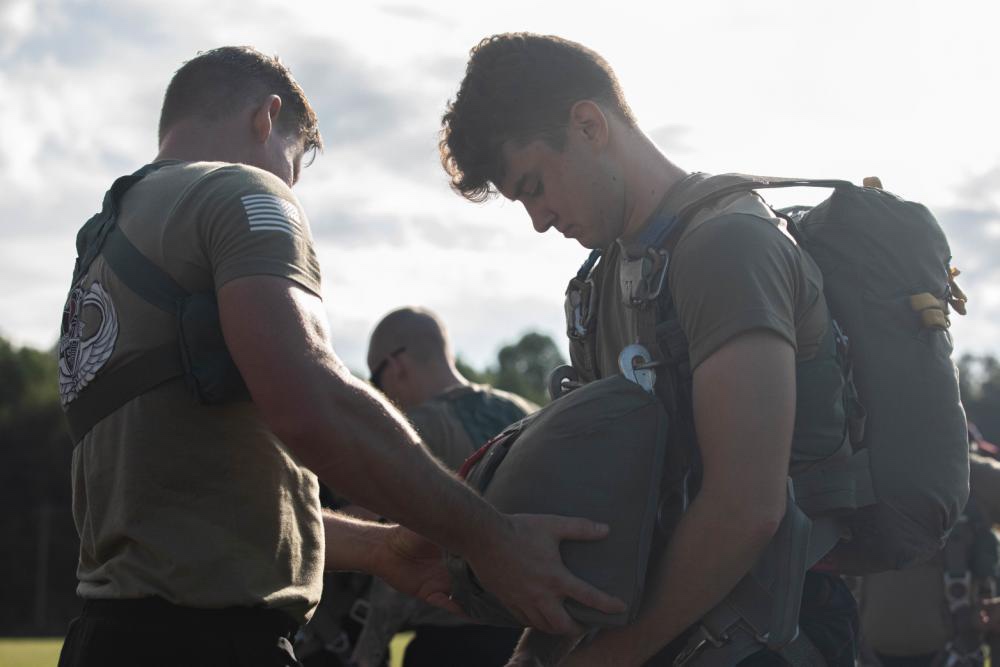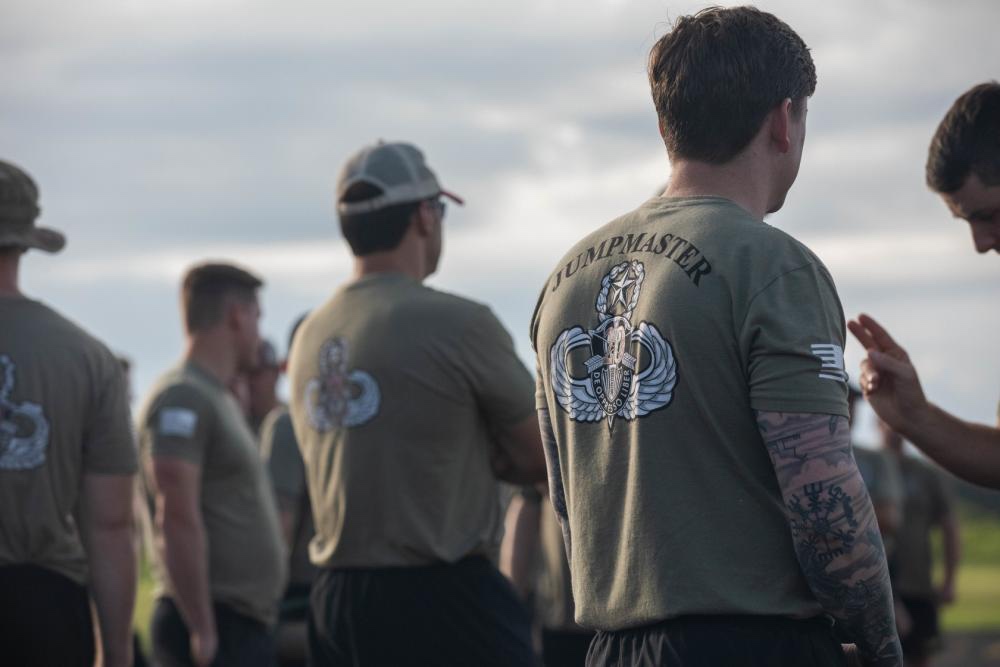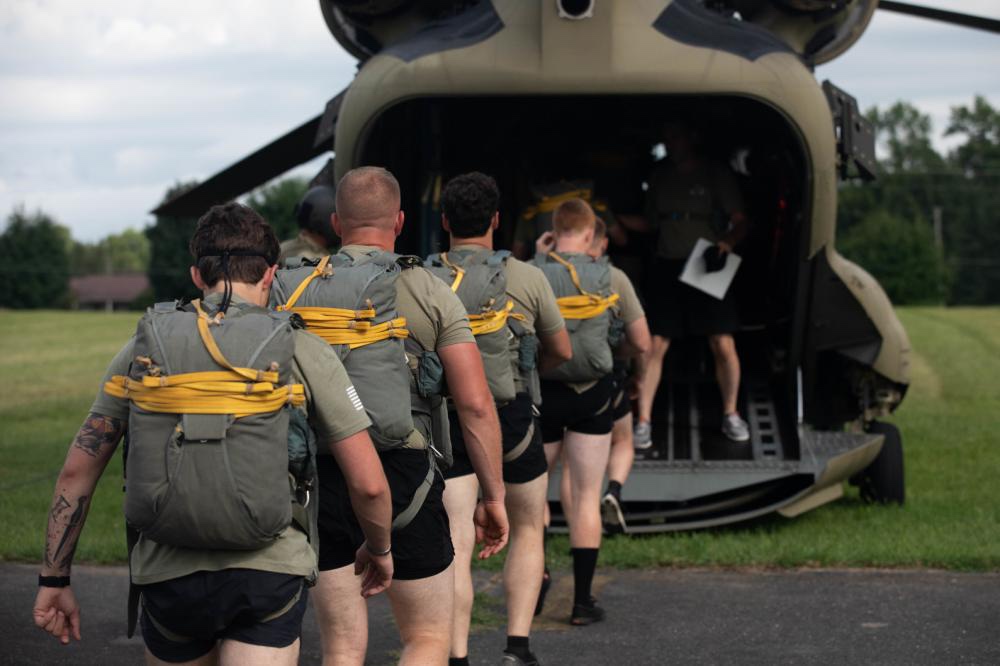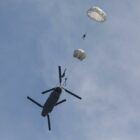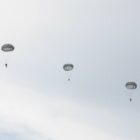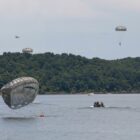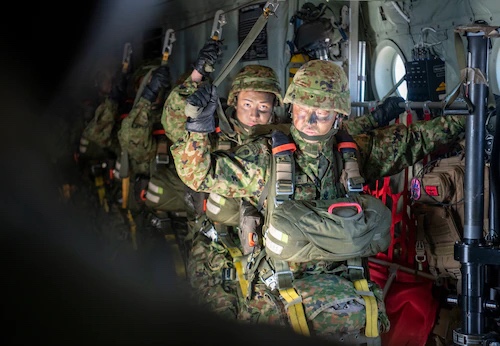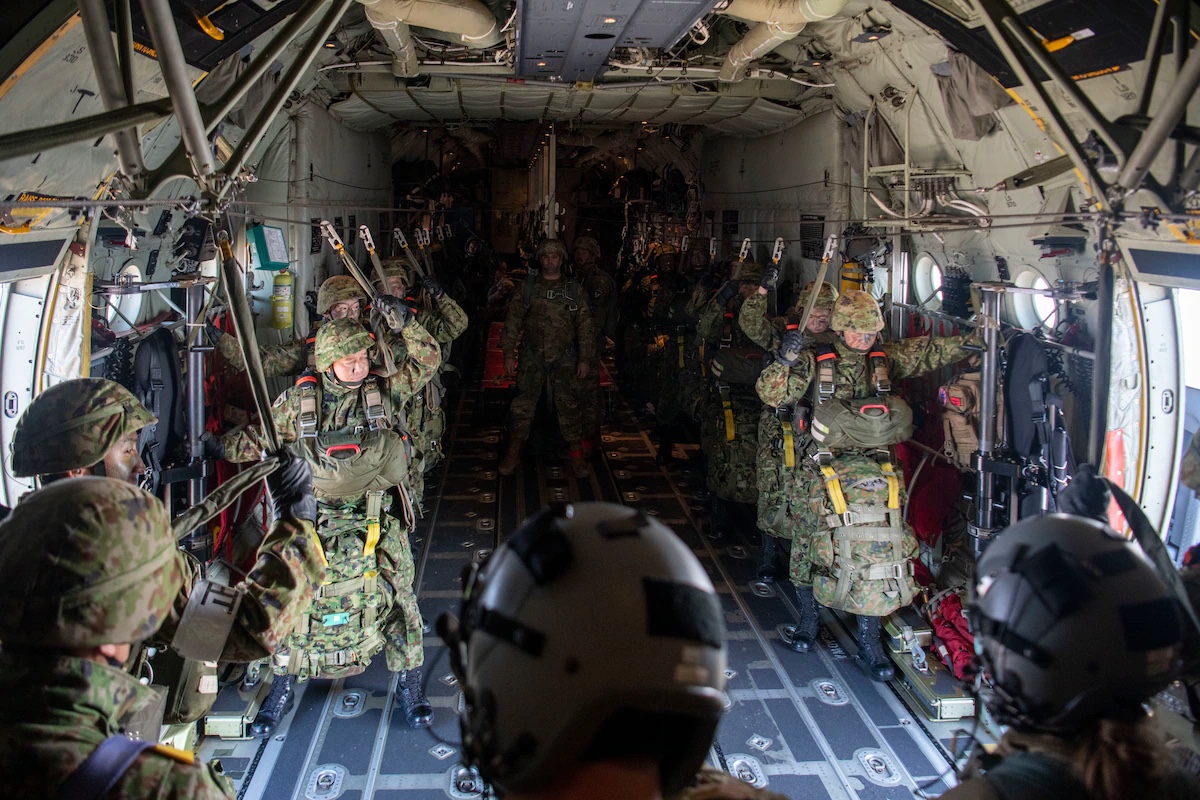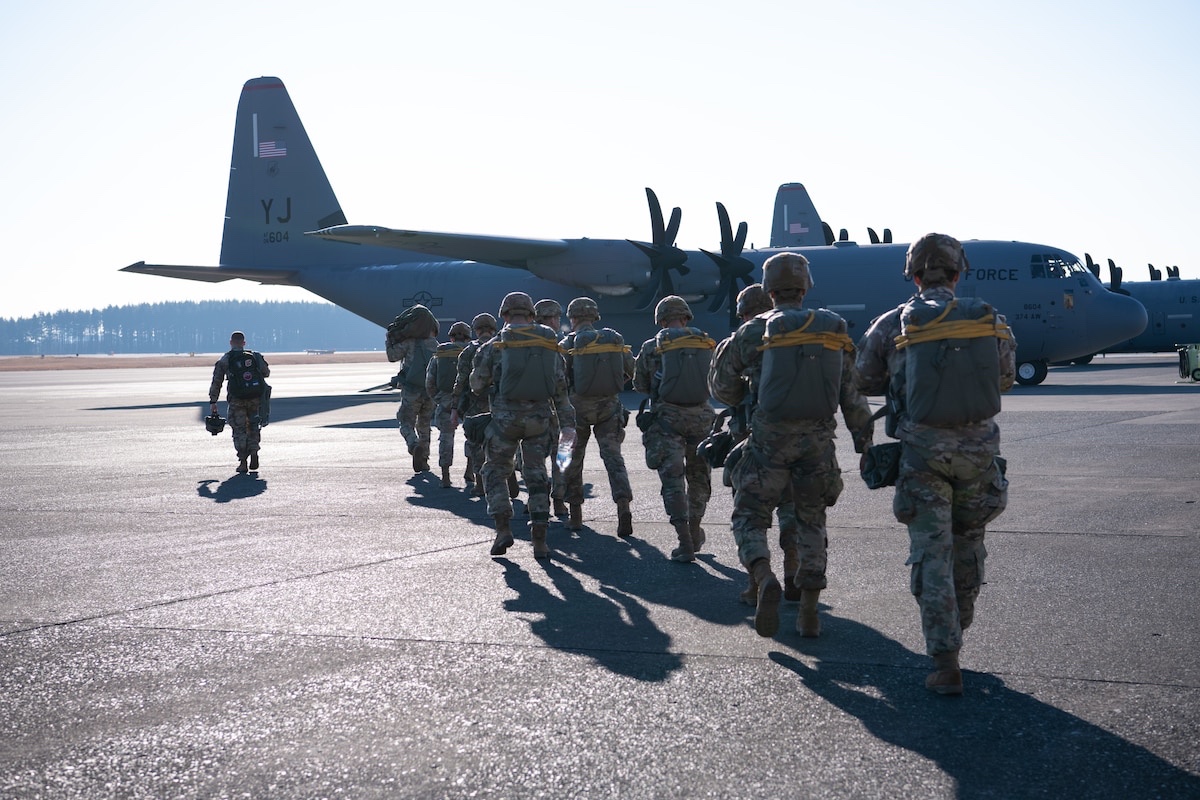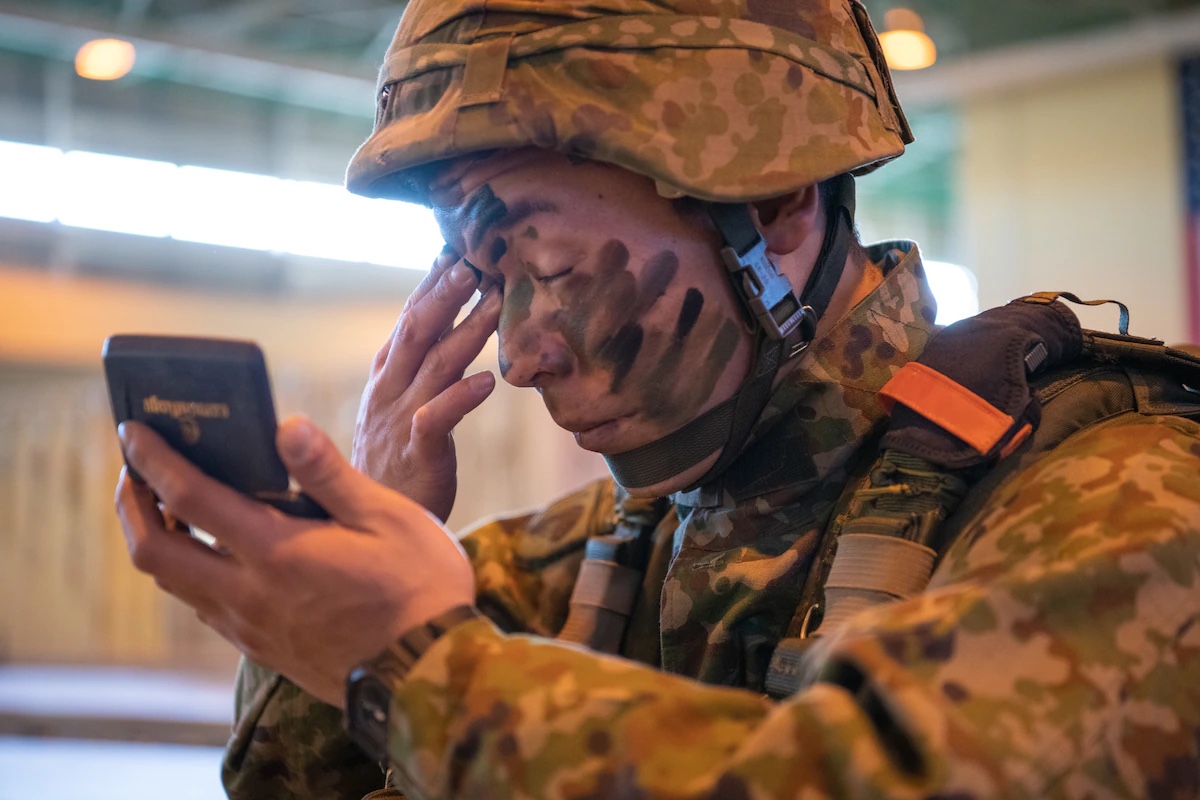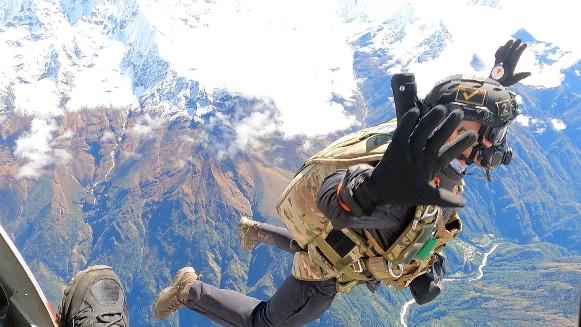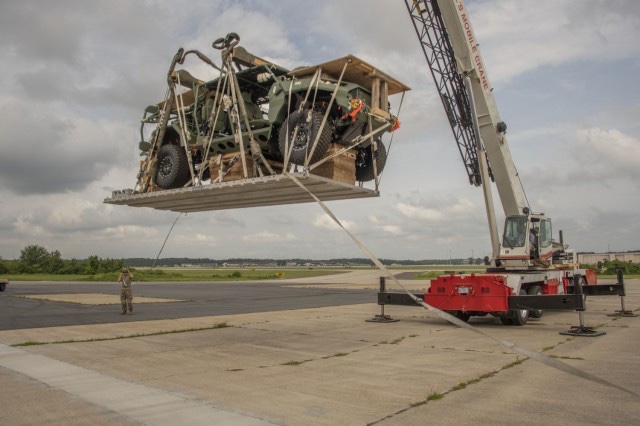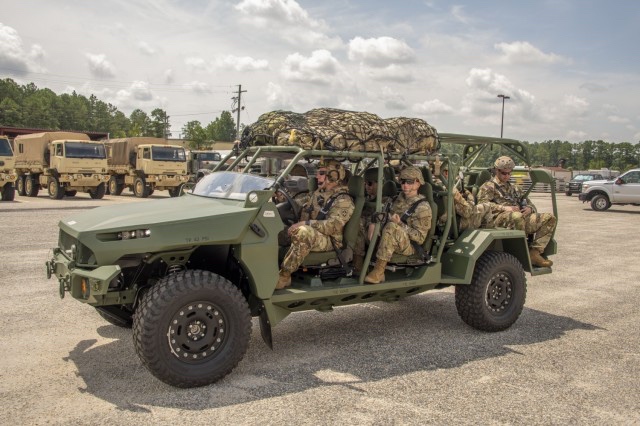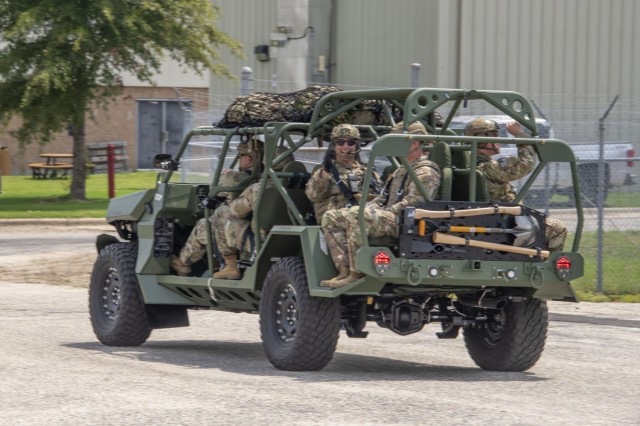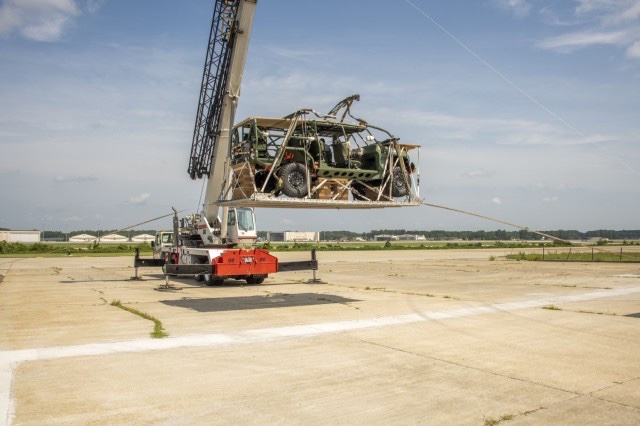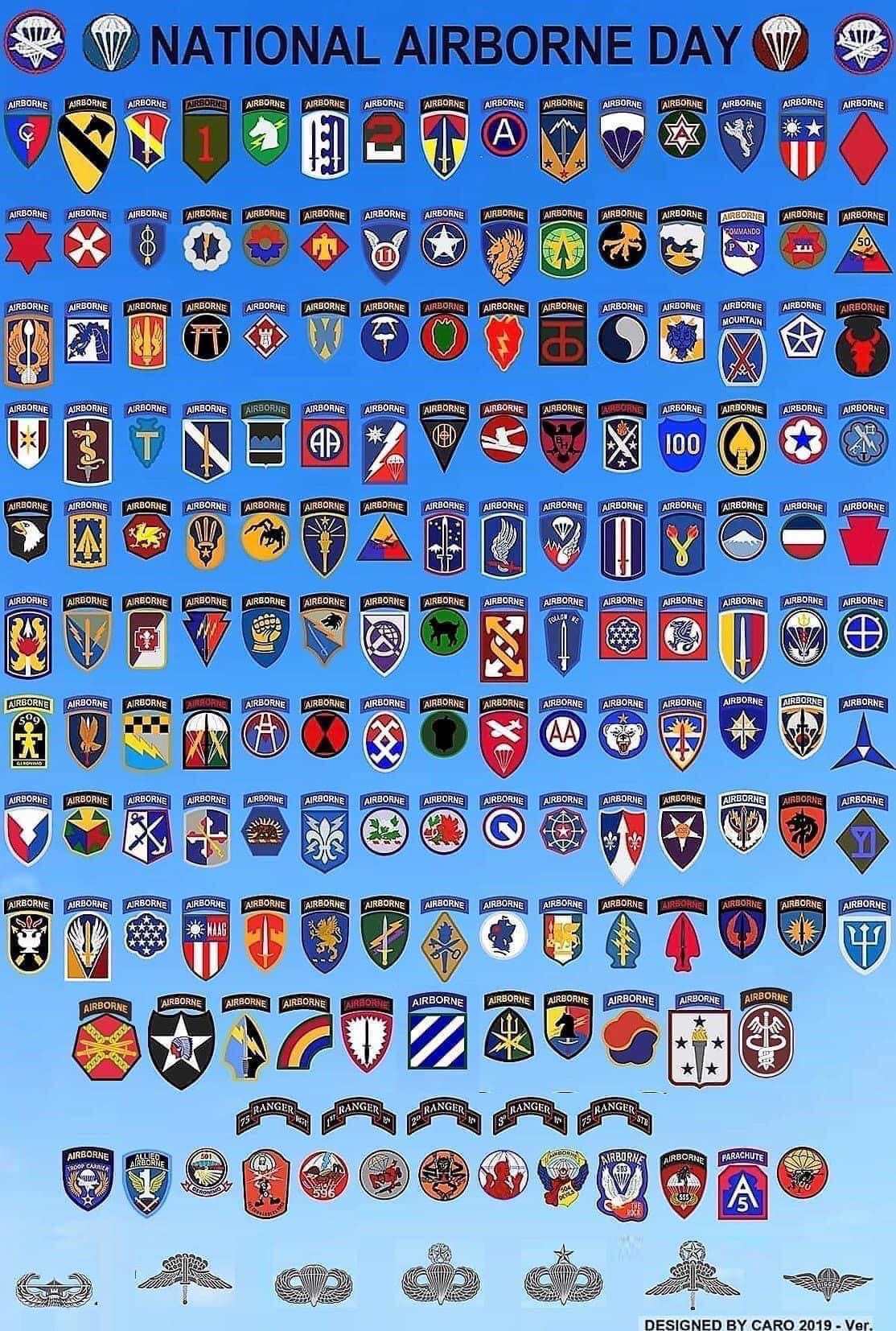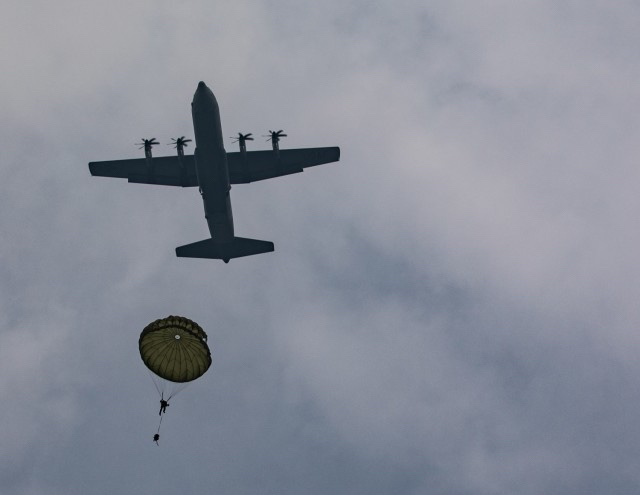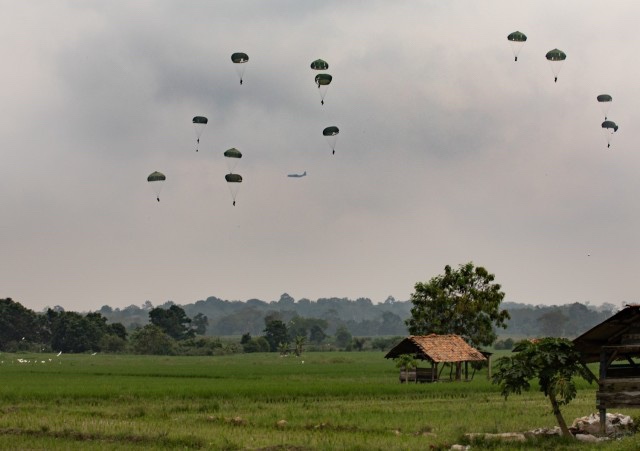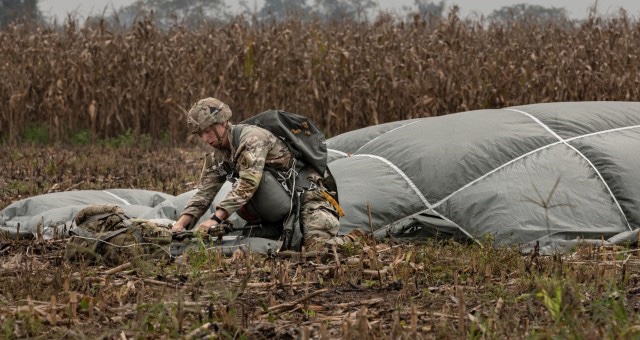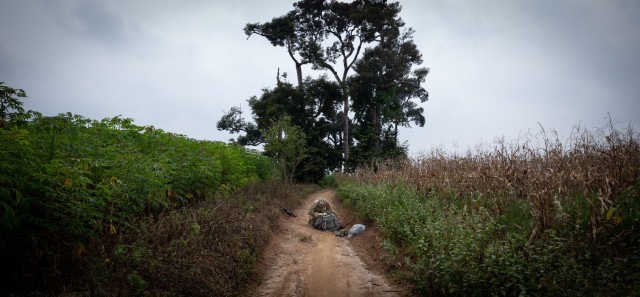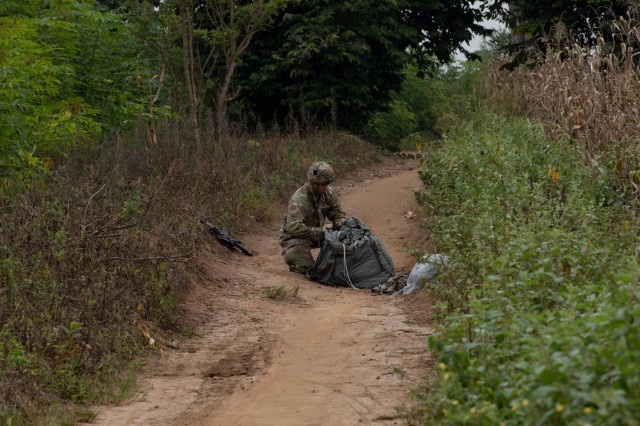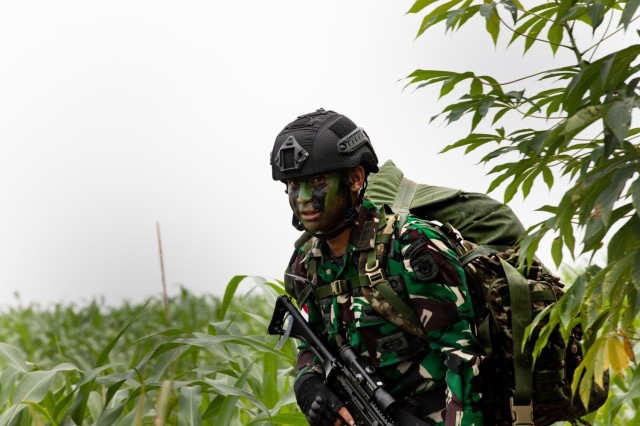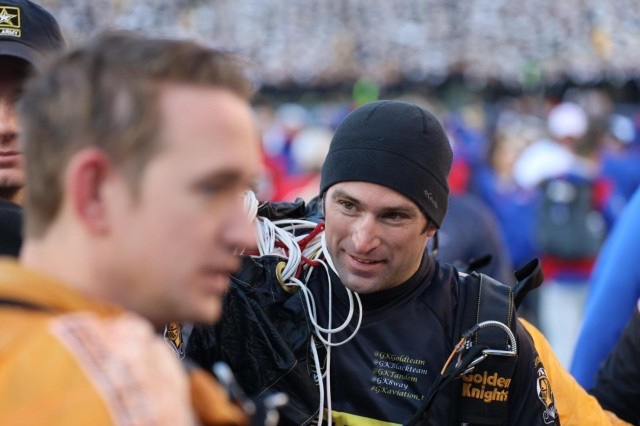
FORT BRAGG, N.C. — A U.S. Army explosive ordnance disposal Soldier made a grand entrance into the Army-Navy game at Lincoln Financial Field in Philadelphia, Dec. 10.
Staff Sgt. Devin T. Diaz jumped into the stadium during the pre-game activities as a member of the U.S. Army Golden Knights Parachute Team.
A native of Sunnyvale, California, Diaz previously served in the 47th Ordnance Company (EOD) on Fort Hood, Texas, and the 759th Ordnance Company (EOD) on Fort Irwin, California.
Both EOD companies are part of the 71st EOD Group and 20th Chemical, Biological, Radiological, Nuclear, Explosives (CBRNE) Command, the U.S. military’s premier all hazards formation. From 19 bases on 16 states, Soldiers and U.S. Army civilians from 20th CBRNE Command take on the world’s most dangerous hazards in support of joint, interagency and allied operations.
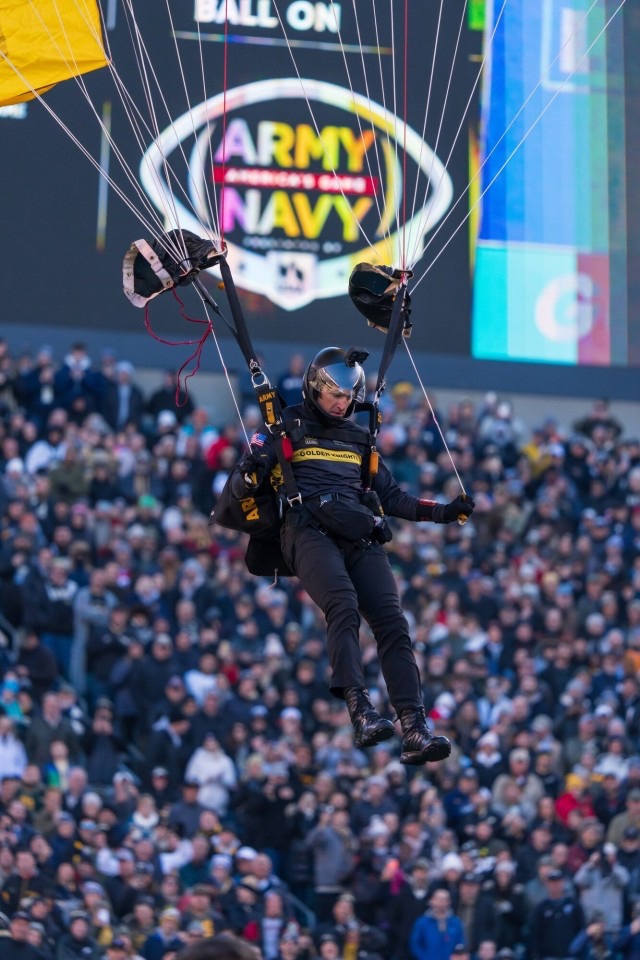
Diaz later served in the U.S. Army Asymmetric Warfare Group on Fort Meade, Maryland, as an EOD advisor. He was the first staff sergeant to make it through the Operational Advisor Training Course in the history of the group.
Diaz decided to become an EOD technician while serving with the military police in Afghanistan on a Counter Improvised Explosive Device team. He was selected for the EOD program in 2011.
He has deployed to Afghanistan three times, including two deployments with Military Police and one as an EOD team leader. He also deployed with the 759th EOD Company to Syria.
From range clearance operations at the National Training Center on Fort Irwin, California, to defeating improvised explosive devices in a combat zone, Diaz has honed his lifesaving and mission-enabling skills. In one of many unique missions in Afghanistan, as an EOD team leader with the 47th EOD Company, Diaz conducted post-blast analysis on 15 trucks that had been destroyed by insurgents with improvised explosive devices.
While serving in the 759th EOD Company, Diaz was also a member of the winning Bomb Squad team in the U.S. Department of Homeland Security-hosted competition called Urban Shield that brought together California SWAT teams, Fire and Rescue Teams, Emergency Medical Services and Bomb Techs.
He said it takes perseverance to succeed as an Army EOD technician.
“The more resilient that you can be, the better an EOD tech you can be,” said Diaz.
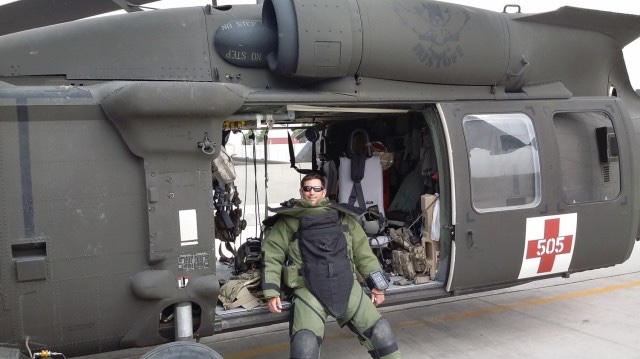
Earlier this year, Diaz demonstrated this kind of resilience when he tore his patellar tendon. After having surgery in February, Diaz was told it would take six to eight months before he could run or jump again.
He started running again four months later and participated in a half marathon six months later. On Oct. 9, he jumped into the Army Ten Miler in Washington, D.C., and then ran the race. He said he intends to participate in the Miami Marathon and he is preparing for an ultramarathon in the future.
Diaz was picked for the Golden Knights during the 2020 assessment and selection. Any American Soldier can apply to serve in the Golden Knights if they have completed 75 free fall jumps, either in the military or as a civilian.
Since the team’s inception, the Golden Knights have participated in 16,000 events in 50 states and 48 countries. With 50 jumpers and 50 support personnel, the teams travel roughly 240 days out of every year. They are one of three U.S. Department of Defense-sanctioned aerial demonstration teams, together with the U.S. Navy Blue Angels and U.S. Air Force Thunderbirds.
As a Golden Knight, Diaz has landed at sports venues and community events around the nation.
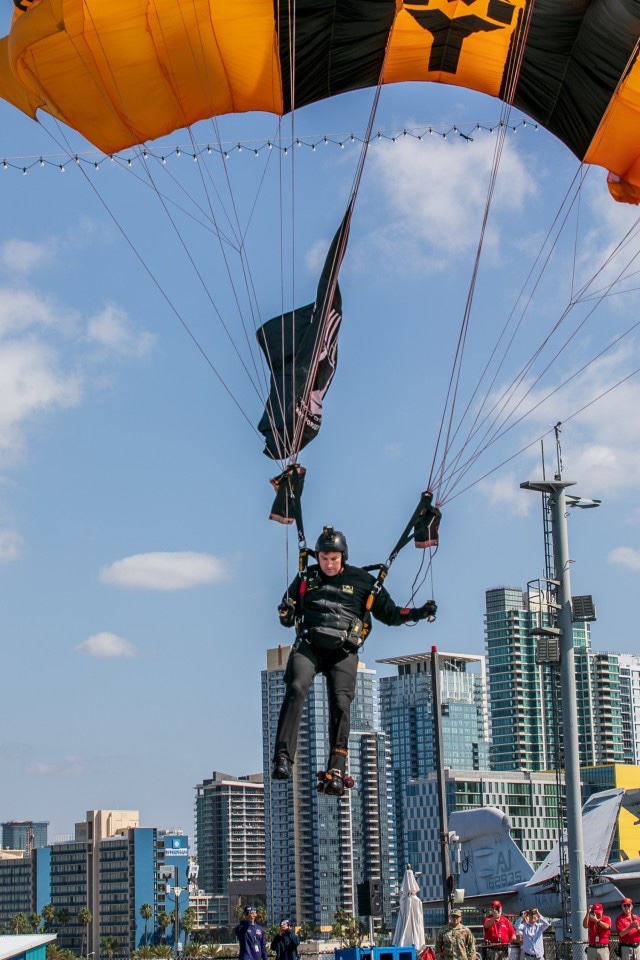
From landing on the aircraft carrier USS Midway Museum in San Diego to jumping into Yankees Stadium in New York City, Diaz has participated in 40 different events during his two years as a member of the Golden Knights’ Gold Team.
The highlight of his jumps so far has been landing on the field before the San Francisco 49ers and Los Angeles Chargers game, Nov. 13.
“I got to jump into my hometown stadium,” said Diaz, who has served in the U.S. Army for almost 17 years. “Not only did I get to do that, but my wife and my father were on the field when I landed.”
Command Sgt. Maj. David J. Silva, the senior enlisted leader from the 71st Ordnance Group (EOD), said Diaz personifies the high caliber of Soldiers serving in the Army EOD community.
“He is a consummate professional who never stops seeking and conquering the next challenge. Whether its disarming IEDs in Syria, improving the Army’s ability to counter asymmetric threats or now supporting recruiting as a member of the elite Golden Knights, he’s an example of what you can achieve if you refuse to get comfortable,” said Silva, a master EOD technician from Long Beach, California, who is the senior enlisted leader for the EOD group that commands all U.S. Army EOD Soldiers stationed west of the Mississippi River.
“He proves EOD isn’t just a military occupational specialty. It’s a profession that gives you the skills to succeed in any venture. We have bomb techs who are working with industry partners and civilian agencies, flying planes and helicopters, ship captains in the Army’s sea fleet and working in Congressional fellowships. We offer complex training under high pressure situations with caring leaders to ensure mission success. That success doesn’t stop in the Army, it carries over to life,” said Silva. “It’s not just a job, it’s a calling that doesn’t stop at the bomb.”
By Walter Ham
